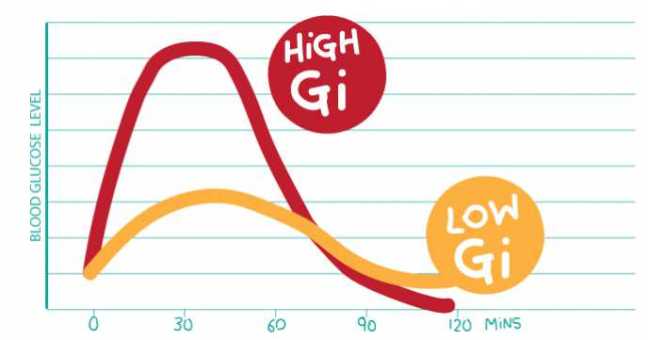The EU Commission just answered to a Member of the European Parliament query about the chance to do glycaemic index claims on the labels in EU.
The answer is interesting in the sense that opens half a door to national interpretation by competent authorities about the issue.
Please do share your thoughts and experience regarding this interpretation of the EU Commission and national enforcement. This would be of great help to many peers.
29th November 2018 – Question for written answer E-006064-18 to the Commission
Regulation (EC) No 1924/2006 of the European Parliament and of the Council of 20 December 2006 on nutrition and health claims made on foods lays down the criteria to be met by such claims. This would appear to cover glycaemic index labelling, which provides important indications regarding the metabolic effects of a given food product.
In this connection, it appears that 16 applications for health claim authorisations seeking to establish a link between the glycaemic index of a food or food ingredient and its effects on health have apparently been rejected.
Can the Commission say whether glycaemic index food labelling falls under Regulation (EC) 1924/2006?
If not, what provisions apply to glycaemic index labelling?
24th January 2019 – Answer given by Mr Andriukaitis on behalf of the European Commission
The Commission considers claims referring to the glycaemic index (GI) of a food as falling under the scope of Regulation (EC) No 1924/2006 (1).
In the context of the assessment of health claims applications on carbohydrates with a low GI, the European Food Safety Authority (EFSA) considered that carbohydrates with a low GI are not sufficiently characterised. EFSA further explained that ‘the GI of a carbohydrate-containing food depends on several factors other than the amount of available (glycaemic) carbohydrates present (e.g. amount and type of dietary fibre, amount of dietary fat, energy density, physical properties, mode of preparation) […]’ (2).
Nevertheless, EFSA assessed in the past with a favourable outcome several health claims on the reduction of post-prandial glycaemic response as the specific health benefit. The latter is reflected in the authorised wording of the corresponding permitted health claims (3).
When enforcing EC law in this context, Member States may allow GI-claims accompanied by or similar to the authorised claims on post-prandial glycaemic response within the limits set by Regulation (EC) No 1924/2006.
(1) https://eur-lex.europa.eu/legal-content/EN/TXT/PDF/?uri=CELEX:32006R1924&from=en
(2) https://www.efsa.europa.eu/en/efsajournal/pub/1491
(3) Commission Regulation (EU) No 432/2012 https://eur-lex.europa.eu/legal-content/EN/TXT/PDF/?uri=CELEX:02012R0432-20170822&from=EN
(Source: EU Parliament)
Some examples of actual authorised health claims on the reduction of post-prandial glycaemic response:
- Consumption of beta-glucans from oats or barley as part of a meal contributes to the reduction of the blood glucose rise after that meal
(The claim may be used only for food which contains at least 4 g of beta-glucans from oats or barley for each 30 g of available carbohydrates in a quantified portion as part of the meal. In order to bear the claim information shall be given to the consumer that the beneficial effect is obtained by consuming the beta-glucans from oats or barley as part of the meal).
2. Consumption of arabinoxylan as part of a meal contributes to a reduction of the blood glucose rise after that meal
(The claim may be used only for food which contains at least 8 g of arabinoxylan (AX)-rich fibre produced from wheat endosperm (at least 60 % AX by weight) per 100 g of available carbohydrates in a quantified portion as part of the meal. In order to bear the claim information shall be given to the consumer that the beneficial effect is obtained by consuming the arabinoxylan (AX)-rich fibre produced from wheat endosperm as part of the meal).


I simply would like to know whether it is legal under EU food legislation to label food as low GI (Glycaemic Index). thanks and looking forward for your reply.
LikeLike
As mentioned by the Commission is not a claim positively listed in the EU register. Is up to the interpretation of the competent authority of each Member State. So…it depends…
LikeLike
thanks for your quick reply. So basically i have to check with the competent authority in Malta to check whether labelling of GI index can be done on local products. thanks
LikeLike
Hi Alex, yes indeed. They might have guidance or interpretative notes. I am not aware of the situation in Malta, but we can be in touch with our local contractors in case. At EU level only claims related to post-prandial glycaemic response of certain carbohydrates are allowed. Not specific GI claims.
LikeLike
Hello Cesare, I miss the start of the conversation, but the question is still new for me. I am working on a food product and I am using only low GI ingredients. I dont want to use claims, just want to communicate I am having this care on developing this product. So the question is: can I say only say: “elaborated using Low GI ingredients” ? I am in SPAIN.
Thanks a lot.
LikeLike
Hi Felipe, the EU Commission clearly stated that there are no possible claims on GI authorized at EU level, but Member States might allow them if – like in the case of Italy for instance – coupled with authorized health claims on certain carbohydrates that stimulate a low post-prandial response. We can assess the situation with more data and involving our Spanish colleagues.
LikeLike